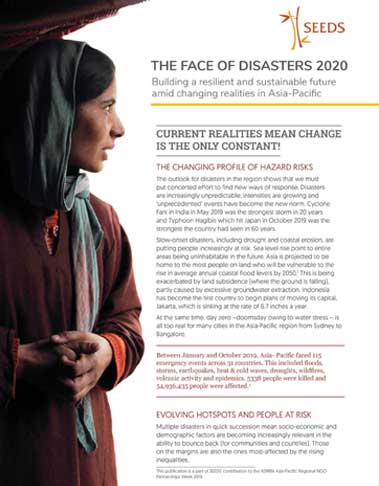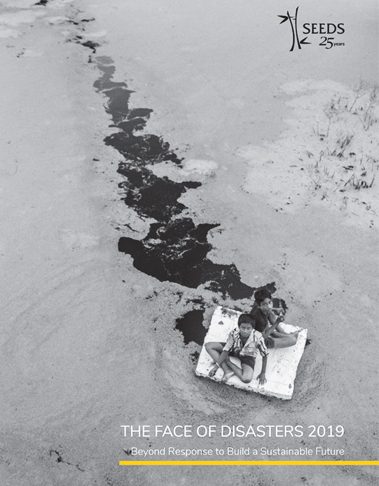
Building a resilient and sustainable future amid changing realities in Asia-Pacific
Current realities mean change is the only constant!
Asia-Pacific is the world’s most hazard-prone continent and the impacts of climate change are only exacerbating this complexity. Disasters are increasingly unpredictable; intensities are growing and ‘unprecedented’ events have become the new norm.
It’s not just the profile of hazard risks that are changing. For at-risk communities and affected families, the interplay between dealing with poverty, climate stresses and natural hazards doesn’t have clear distinctions. Each reinforces the other. The numbers of people affected continue to rise, with disaster induced migration adding to conflict migration.
New hotspots are evolving and rapid demographic changes mean the elderly require concerted attention. There is also a clear impact on development gains, with Asia-Pacific currently not on track to meet its Sustainable Development Goals targets.
At the same time, restrictions to civil society and risks to humanitarians are on the rise across the region.
Against this backdrop, how can civil society best bring value to at-risk communities? The Face of Disasters 2020 Practice Brief explores these myriad changing realities and suggests eight emerging areas of engagement for civil society and humanitarian agencies.

THE FACE OF DISASTERS 2019
Beyond response to build a sustainable future
Current trends are reinforcing that disasters have multiple facets. Our approach must as well.
India saw almost every type of hazard, except for an earthquake, in 2018. From flood to drought, heat and cold waves, lightning strikes, cyclones and even hailstorms, the wide range of disasters impacted most of the country. This multiplicity meant not a month went by without a disaster and their impact is growing more complex.
While this multiple event pattern is repeated every year, only a few really capture the public attention. Other risks continue to intensify under the radar. For at-risk communities and affected families, the interplay between dealing with poverty, climate stresses and natural hazards doesn’t have clear distinctions. Yet the discourse of disasters is still too often seen in isolation.
The Face of Disasters 2019 therefore takes a broader view to the issue, building on risk trends, interviews and experiences from the ground to capture its multiple faces. For the risks of the future will be different from the risks of the past. Recognising this and preparing for the unknown will be key to building a safer and more sustainable world.
